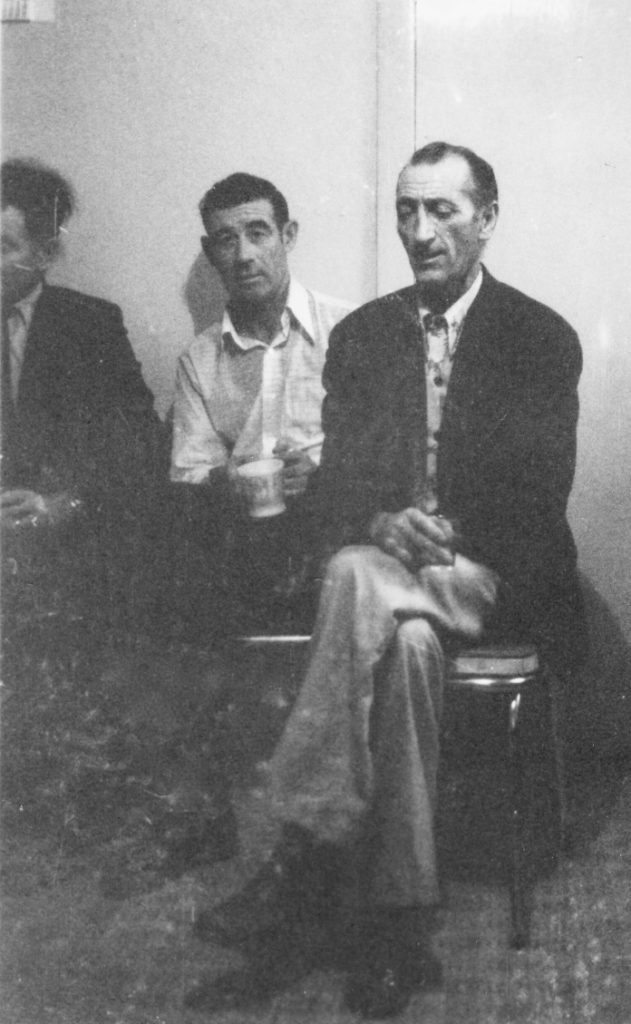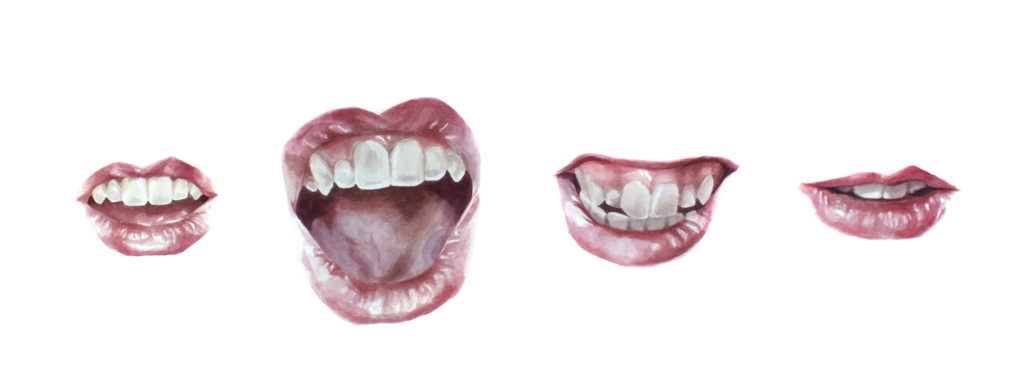Gina Burgess: “It was literally a dream come true”
October 2021
Your musical output includes flamenco, Arabic, and the klezmer band Der Heisser. Sounds like you keep your ears open. Do you ever feel you need to more narrowly focus, or is it always a case of the more the merrier?
I do like to play many different styles of music. Learning other styles/genres of music keeps me motivated and actively learning. Honestly though, I haven’t played Flamenco or Arabic music in ages. Before Covid I was touring full time with the Jerry Cans which left very little time for other projects. I don’t like to half ass anything! And I really don’t like to play music of any style that I can’t get into and practice. Therefore, circumstances seem to lead my focus; what’s happening around me will influence my attention and practice. Although I haven’t played with the Klezmer band in a while, together with the bass player Adam Fine, we have enough original Klezmer compositions for a full length album. It’s a goal of mine to record these tunes and produce an all original Klezmer album. Right now however my attention is on school – I’m at Memorial doing a music Education degree – and on releasing my first solo album which I will be out by July, 2022.
How does you work as a yoga instructor fit with your musical career – or is it a break from it?
I actually started practicing yoga when I was 19 as part of my recovery from a repetitive strain injury caused by playing violin. It was an extremely difficult period in my life. I was at Dalhousie University on a scholarship for violin, and I couldn’t play! So I had to first decide if I wanted to continue playing violin and not just go into another field. Once I made the decision to continue with music, I had to relearn to play the violin all over again. It took months to retrain the muscles and get back into it. I knew my classical career was over, which was devastating at first, but as I relearned to play I relearned with the Swing Manouche style … fast forward and in turn the band “Gypsophilia” was formed. We were a band for over 12 years, wrote our own music mostly in the Manouche style, toured all over, won some awards. It was a really unexpected and amazing musical experience for me. So the whole injury was actually a blessing in disguise. I don’t think I’d be playing violin now if it weren’t for my yogic practice. Once I began and realized the benefits it has for all people, especially musicians, I started using yoga in my private lessons and working with other musicians with injuries. So, in 2017 after the Jerry Cans toured Australia I went to the Wise Living Yoga Academy in Thailand and got my yoga teacher’s training. Now I am legally certified to use the practice of yoga in my music lessons. A lot of what I have learned from my yogic practice has helped me with not only injury prevention, but also with how to stay healthy and balanced as a touring musician. I’m actually almost done writing a book on musician wellness; how to stay healthy on the road. It’s more of an activity book for travelling musicians; with yoga postures that can be done on the plane and meditation exercises to help one sleep after a big gig. There’s also mandalas to colour for relaxation, ideas on how to be more environmentally conscious on tour, and tips for healthy eating and drinking habits. I hope to have it out within the next year or two. Perfect timing as things open up after Covid restrictions and musicians get back into touring again. YAY!

You were born and based in Halifax; how did you become part of the Jerry Cans in Iqaluit? Are you now based in St John’s?
My first trip to Iqaluit was as a teacher and chaperone on an exchange trip between the chamber ensemble at the Maritime Conservatory of Performing Arts in Halifax and the Iqaluit fiddler ensemble. I was randomly billeted with Beverley Browne (who actually founded the Iqaluit music society in 1996) and her son, Andrew Morrison, was looking for a fiddle teacher to help him set up a music camp in Pangniqtuuq, so Bev hooked us up and together with Kathleen Merrit and Saila Qayaq we organized and ran a music camp in Pang. The camp was so successful that we got funding to do something similar in Igulik, Kangiqliniq (Rankin Inlet), and Kanngiqtugaapik (Clyde River). For five years we ran these camps and every time I went through Iqaluit I would jam with Andrew, and his friends Steve Rigby and Brendan Doherty. They played music together since they were kids so they were really tight and fun to play with. We started writing our own music, Nancy Mike joined the music camp crew and started throat singing and playing accordion with us when we jammed … thus the Jerry Cans were born! It was a very organic and natural process. We now have Avery Keenainak throat singing and playing accordion with us. Never in a million years did we think that we’d go on to perform all over the world, be on the Juno Awards show, perform on Parliament Hill, and all the other cool experiences we’ve had. We are ever grateful for our community in the North for supporting us along the way. As the only southerner in the band, I especially feel grateful for being accepted into this beautiful community.
You’ve toured Europe, Australia, Greenland; do you have a favourite spot to perform or visit?
I feel very blessed to have been able to tour and travel to all the places I’ve gone. As a kid growing up and busking on the Halifax waterfront I dreamed of doing these things but I never knew these dreams would come true in the way they have! Some of my favourite tours have been to Germany. They really know how to take care of musicians there. They feed us so well (too well!) and provide such nice places to stay. I also really appreciated my time in Hungary. Hungarian violin music is sooooo incredible. As a kid I was really drawn to the Brahms Hungarian Dances (they are still some of my favourite pieces to play) and as a young adult I really got into the Romani violin playing of that area. I’ve always, always dreamt of hearing Hungarian violin music in Hungary. While I was staying there I got to hear many different styles of violin and even got to jam with a few bands! It was literally a dream come true. I absolutely love Greenland. It’s gorgeous in land scape and the people are ever friendly and kind. I was taken in by a family there years ago and we still regularly keep in touch. It’s so nice to have these beautiful pockets of family all over the world. Just before Covid I had the absolute pleasure of staying in New Orleans for a month. Talk about a bountiful musical community! It was unbelievable. Luckily, I was there with a friend, Martha Radice, who has been going down to Nola for years. She’s an anthropologist and studies Mardi Gras, so she knows many of the musicians and artists down there. Being there with Martha really gave me an “in” to jam and perform with some of these folks. The level of musicianship there is out of this world. I learned so much watching and playing with folks, it’s an experience I’ll never forget. Actually, being here in St John’s reminds me of New Orleans quite a bit. All the venues here and great musicians playing every night. It’s so wonderful to be able to hear such a high level of musicianship any night of the week. What a joy. The support and enthusiasm people have here for the arts is heart-warming and I’m so glad to be a part of the musical community here now. I think I’ll be staying here well after I’m done my music Ed degree at MUN. I’ve really taken to this city and its people.
What can you share about your upcoming solo project?
I’ve been working on my solo album for about seven years now. I wrote almost all of the pieces up in Nunavut, and many of the pieces are actually modelled after the practice of traditional Inuit throat singing. The instrumentation is for violin, double bass, drum kit, Inuit Throat Singer, and Brazilian percussion. Instead of two throat singers, the violin will often take one lead part and the throat singer (or another instrument) takes the other part. It was so cool to hear the music for the first time with Cynthia Pitsiulak actually throat singing. Up until then I had only heard it in my head. What a joy to hear it in real life! And with such an experienced and wonderful Throat Singer. Wow We recorded at Joel PlaskeI’s studio, New Scotland Yard, in Dartmouth, NS, and Jace Lasek from Breakglass studios produced the album in Montreal. There’s 10 songs on the album ranging from folk to classical. There’s a few trancey pieces I really dig, Jace did an amazing job with the production; there’s lots of side to side panning and other cool psychedelic sounds in there. I’ll be putting it out on vinyl and encourage people to listen with headphones or nice speakers to get the full affects of the pieces. Each piece has a story even though there are no words. It’s a musical journey for the listener and I can’t wait to have it out into the world. I’ll be launching the album with the release of my first music video on Feb. 22, 2022, here in St John’s. This video is for a piece I wrote in Iglulik called “Ravens on the Roof” and it’s a collaboration between myself and Alan Syliboy a visual artist from Truro, NS. I took pictures of Ravens on my various trips to Nunavut; Allan took these photographs and painted over top of them. Alan’s paintings were then brought to life through Rob Denton’s animation. Luke Fancy added digital animation of ravens and sacred geometry and the whole piece was brought together by Lukas Pearce who edited and processed the work. It’s a wonderful piece of art and I’m so excited to share it with others. The full album will be out this summer and I hope to have our first full band tour this July.



